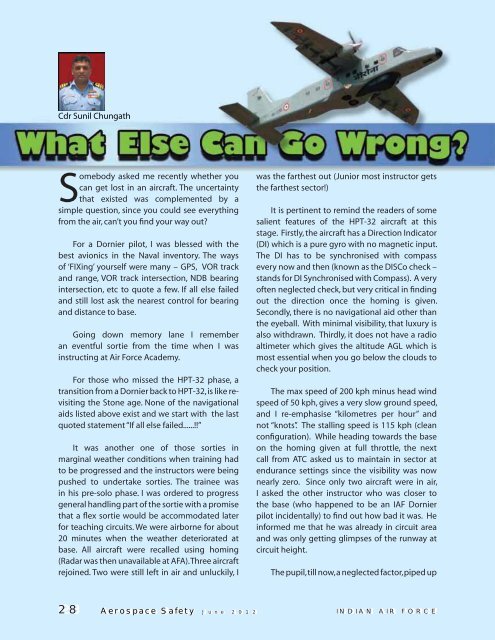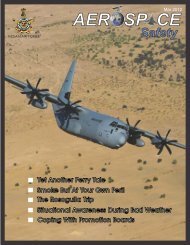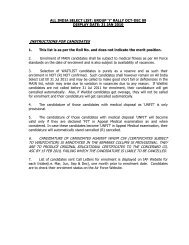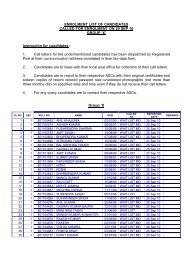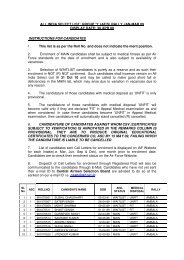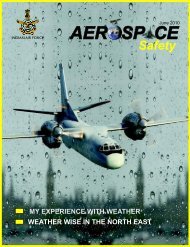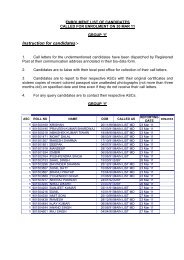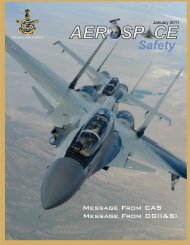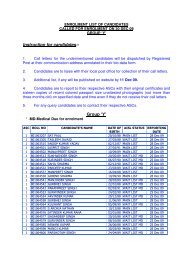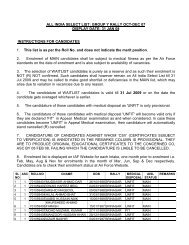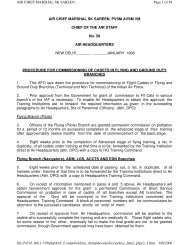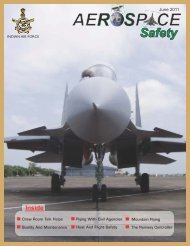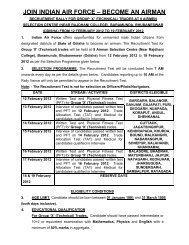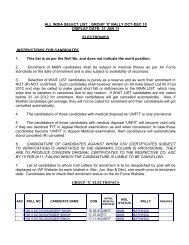You also want an ePaper? Increase the reach of your titles
YUMPU automatically turns print PDFs into web optimized ePapers that Google loves.
Cdr Sunil Chungath<br />
Somebody asked me recently whether you<br />
can get lost in an aircraft. The uncertainty<br />
that existed was complemented by a<br />
simple question, since you could see everything<br />
from the air, can’t you find your way out<br />
For a Dornier pilot, I was blessed with the<br />
best avionics in the Naval inventory. The ways<br />
of ‘FIXing’ yourself were many – GPS, VOR track<br />
and range, VOR track intersection, NDB bearing<br />
intersection, etc to quote a few. If all else failed<br />
and still lost ask the nearest control for bearing<br />
and distance to base.<br />
Going down memory lane I remember<br />
an eventful sortie from the time when I was<br />
instructing at Air Force Academy.<br />
For those who missed the HPT-32 phase, a<br />
transition from a Dornier back to HPT-32, is like revisiting<br />
the Stone age. None of the navigational<br />
aids listed above exist and we start with the last<br />
quoted statement “If all else failed......!!”<br />
It was another one of those sorties in<br />
marginal weather conditions when training had<br />
to be progressed and the instructors were being<br />
pushed to undertake sorties. The trainee was<br />
in his pre-solo phase. I was ordered to progress<br />
general handling part of the sortie with a promise<br />
that a flex sortie would be accommodated later<br />
for teaching circuits. We were airborne for about<br />
20 minutes when the weather deteriorated at<br />
base. All aircraft were recalled using homing<br />
(Radar was then unavailable at AFA). Three aircraft<br />
rejoined. Two were still left in air and unluckily, I<br />
was the farthest out (Junior most instructor gets<br />
the farthest sector!)<br />
It is pertinent to remind the readers of some<br />
salient features of the HPT-32 aircraft at this<br />
stage. Firstly, the aircraft has a Direction Indicator<br />
(DI) which is a pure gyro with no magnetic input.<br />
The DI has to be synchronised with compass<br />
every now and then (known as the DISCo check –<br />
stands for DI Synchronised with Compass). A very<br />
often neglected check, but very critical in finding<br />
out the direction once the homing is given.<br />
Secondly, there is no navigational aid other than<br />
the eyeball. With minimal visibility, that luxury is<br />
also withdrawn. Thirdly, it does not have a radio<br />
altimeter which gives the altitude AGL which is<br />
most essential when you go below the clouds to<br />
check your position.<br />
The max speed of 200 kph minus head wind<br />
speed of 50 kph, gives a very slow ground speed,<br />
and I re-emphasise “kilometres per hour” and<br />
not “knots”. The stalling speed is 115 kph (clean<br />
configuration). While heading towards the base<br />
on the homing given at full throttle, the next<br />
call from ATC asked us to maintain in sector at<br />
endurance settings since the visibility was now<br />
nearly zero. Since only two aircraft were in air,<br />
I asked the other instructor who was closer to<br />
the base (who happened to be an IAF Dornier<br />
pilot incidentally) to find out how bad it was. He<br />
informed me that he was already in circuit area<br />
and was only getting glimpses of the runway at<br />
circuit height.<br />
The pupil, till now, a neglected factor, piped up<br />
28 Aerospace Safety J u n e 2 0 1 2<br />
INDIAN AIR FORCE


